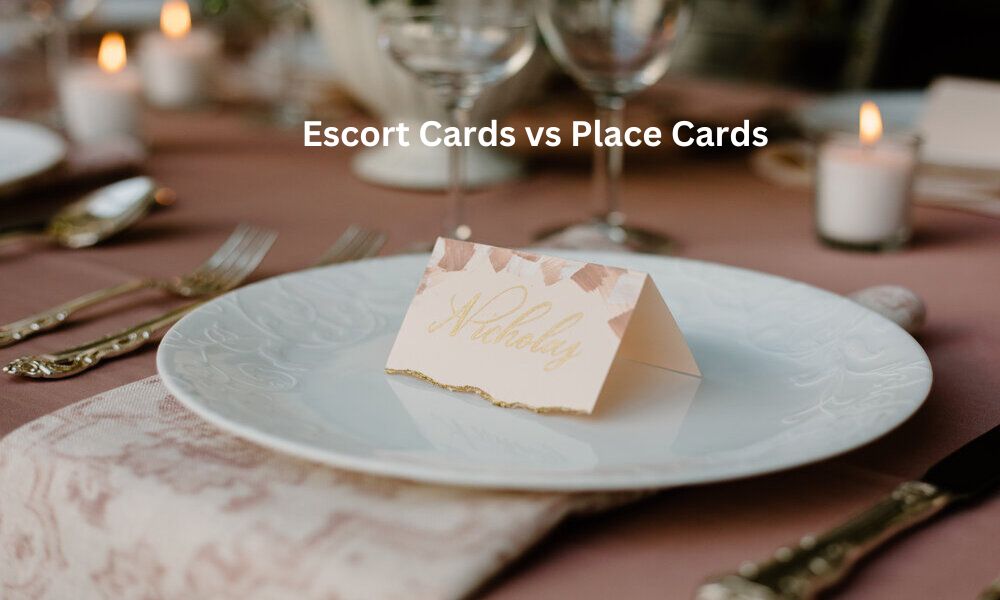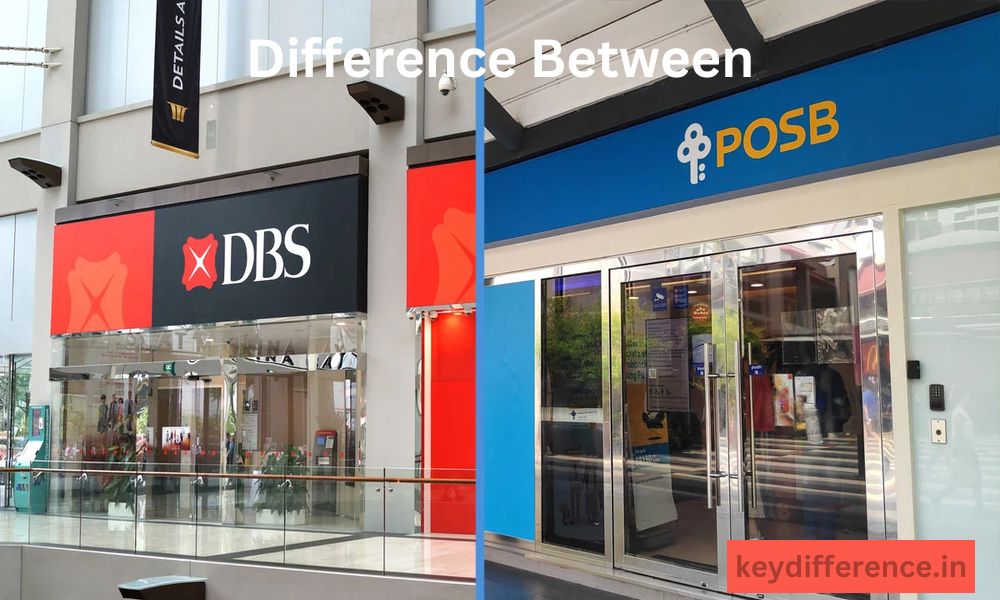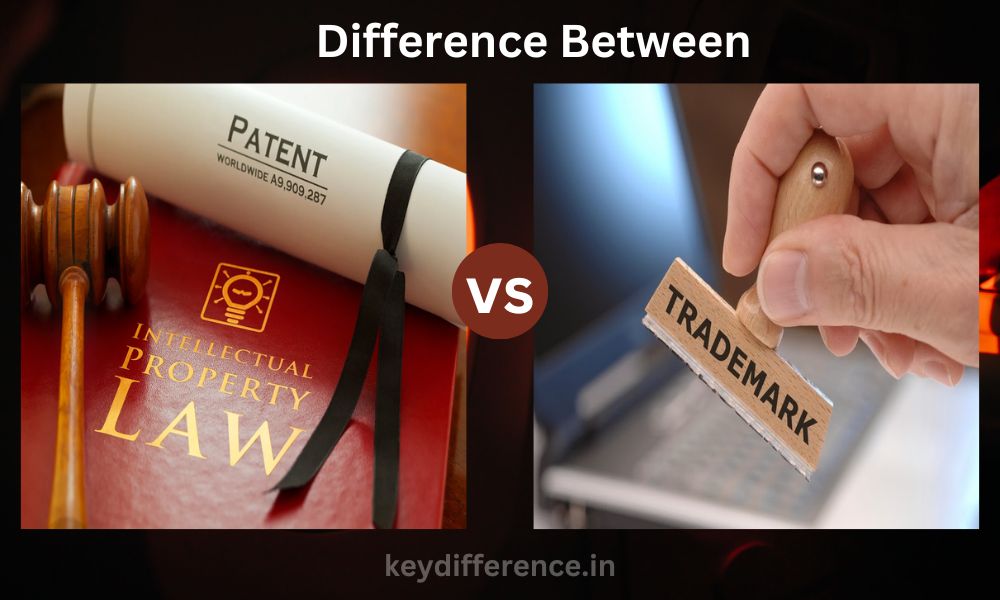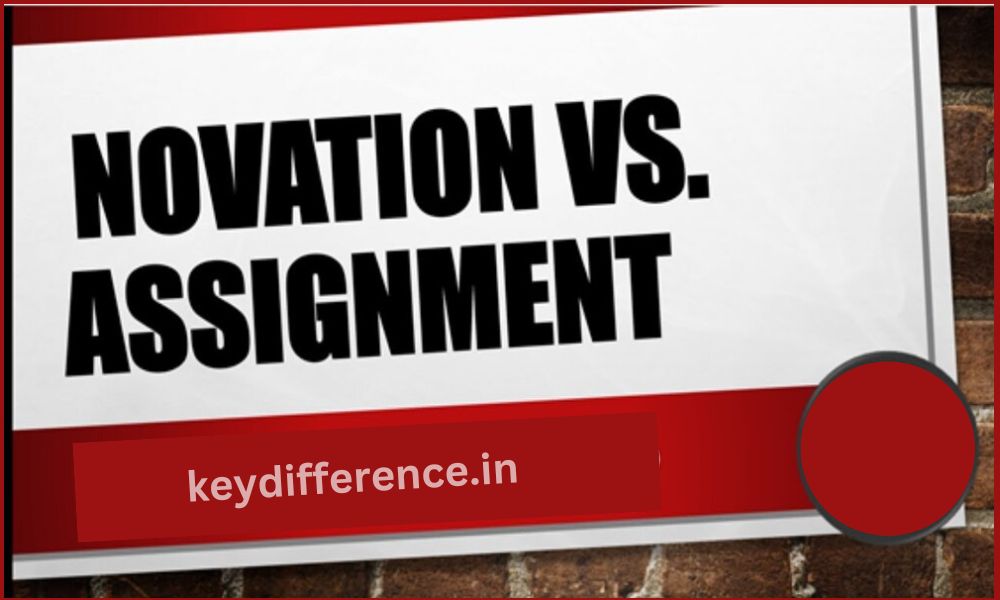Introduction
Planning and organizing any event – be it a wedding, corporate gala, or formal dinner – requires the use of seating arrangements that run smoothly. Escort cards and place cards are frequently utilized tools that assist guests in finding their designated seats while simultaneously improving event organization and flow.
In tWe will investigate the distinctions between escort cards and place cards, their purposes, how they’re displayed, what information they convey, and any potential advantages or benefits they offer event planners and hosts in selecting which option best meets their event needs.
Additionally, we will examine when using escort cards and place cards, taking into account factors like event size, guest preferences, and formality. By doing this, organizers can create a more customized and enjoyable experience for their guests.=By exploring the intricacies of escort cards and place cards, we can demonstrate their significance in creating an organized event where guests feel welcomed and relaxed during attendance.
Definition of escort cards
Escort cards are small pieces of stationery used at events such as weddings, galas, and formal dinners to guide guests to their assigned tables. Typically featuring guests’ names and table numbers or names displayed prominently near the entrance or foyer of an event venue.
Escort cards provide guests with visual aid when searching for their assigned table and ensure an efficient seating arrangement; their designs often aim to be visually appealing to suit each event’s theme or decor.

Placement and display
Placement and display of escort cards is crucial to their effectiveness in leading guests to their tables.
Here are some best practices for the placement and display of escort cards:
Escort Cards in the Foyer or Entrance: Escort cards should be displayed prominently near the entrance or foyer of an event venue, enabling guests to quickly locate their assigned tables upon arriving. The display area can take the form of a table, board, or any other creative setup that fits with its theme and aesthetic.
Alphabetical Order: Escort cards are often organized alphabetically alphabetically by guest name to make navigation simpler for guests. By scanning their own last name in alphabetical order, guests can quickly find their card and quickly identify it, saving time and reducing confusion.
Clear Visibility: It is vital that the escort cards are clearly visible and accessible for guests. A well-lit, organized display should enable guests to easily locate their cards without hassle.
Card Holder or Display Stand: Depending on the design and format of escort cards, they can be displayed in individual card holders or display stands that keep them upright for guests to easily pick up their cards. Card holders can be simple or designed creatively to reflect an event’s theme.
Design Elements: When displaying escort cards, their display area should be enhanced with decorative accents such as flowers or greenery to increase its visual appeal and draw in guests’ interest. By doing this, these design elements help create a cohesive yet inviting display that attracts their guests’ attention.
Signage or Instructions: Having signage or instructions near the display area to direct guests on how to locate their assigned table using an escort card can help ensure an efficient transition from display area to dining area. Clear instructions help eliminate confusion and ensure a seamless experience from display area to dining area.
Event organizers can ensure a positive event experience for their guests by considering these practices of placement and display when designing the layout for escort cards, making sure guests can easily locate their table assignments and start off their event experiences on an excellent note.
Information included on escort cards
Escort cards contain information to guide guests to their assigned tables at an event or venue.
Details may differ depending on the specific event and organizer preferences;
here are some common details typically included on escort cards:
Name of Guests: Escort cards should prominently display the names of each guest who they are designed for, so that guests can easily identify themselves among others and find their correct table.
Table Number/Name: Escort cards provide guests with their assigned table’s table number or name to help facilitate a smooth seating arrangement and locate it quickly and efficiently. This allows guests to find their seating directly.
Additional Details: Escort cards may feature additional information relevant to an event or organizer, such as names of couples/hosts/hosts, event date(s), or any other pertinent details that add personal flair. Adding this element can create a coherent design theme with the overall event design.
Design and Aesthetics: While not strictly informational, design and aesthetics play a pivotal role in creating effective escort cards. Their visual elements, colors, fonts and materials should complement the theme of an event and produce a visually pleasing display.
It is essential that the information on escort cards be clear and legible, enabling guests to quickly recognize their name and find their assigned table without confusion. Escort cards featuring accurate yet easily understandable details will enhance guest experiences as well as contribute towards overall event organization.
Benefits of using escort cards
Utilizing escort cards at events offers several advantages that contribute to a smooth and organized event experience for both guests and event organizers alike.
Here are a few key advantages:
Escort Cards Facilitate an Effective Seating Arrangement: Escort cards ensure an efficient seating arrangement by leading guests directly to their assigned tables, eliminating time wasted searching for seating at an unfamiliar venue and decreasing confusion. They make sure guests arrive on time so the event runs more smoothly.
Flexibility for Guests: Escort cards offer guests greater freedom within their assigned tables, so instead of being restricted to specific seats they can select their own seats from within their designated table – enabling guests to sit next to friends or family for social interaction and creating a comfortable seating arrangement.
Visual Guidance: Escort cards serve as visual guides for guests, leading them to the designated display area where their tables can be found. A clearly organized alphabetical list or table number display of these cards helps guests quickly locate theirs for an effortless transition to their assigned tables.
Personalization and Creativity: Escort cards offer event organizers an opportunity to add personalization and creativity into event design. They can be tailored specifically for the theme of an event, featuring unique designs, colors, materials, etc. That way organizers can show their own sense of style when seating arrangements occur.
Enhancing Guest Experience: Escort cards help create an exceptional guest experience by creating an atmosphere of organization and guidance. When guests can easily locate their assigned tables, they feel welcomed and valued – plus having professional escort cards adds an additional level of care and professionalism that leaves guests feeling well taken care of during your event.
Event Coordination: From an event organizer’s point of view, escort cards make managing seating arrangements simpler. By giving an accurate snapshot of guest assignments and making sure each table is adequately filled out. Furthermore, they help event staff direct guests to their tables while offering any necessary assistance or directions to get there quickly.Event organizers can use escort cards to craft an effective seating arrangement that enhances guest satisfaction, reduces confusion, and adds a personal touch to their event.
Efficient seating arrangement
One of the key benefits of using escort cards at events is facilitating efficient seating arrangements.
Here are some reasons why these cards contribute to an efficient seating arrangement:
Clear Table Assignments: Escort cards provide clear indications of each guest’s seating arrangements by clearly displaying table numbers or names on them, making finding their assigned table easier and saving time in the process. Guests no longer need to guess or inquire about where their seats will be situated – making the process quicker overall and reducing wasted effort and wasted effort by guests trying to guess or inquire about seating themselves.
Escort cards help ensure a smooth guest flow into a dining area, with guests quickly finding their escort cards at display area and being guided directly to their assigned tables, eliminating congestion at entrance points. This also eliminates bottlenecks at entrance.
Efficient Seating Process: Escort cards enable event staff to more quickly guide guests to their assigned tables, with less time spent on individual coordinating and guiding each guest individually, leading to an efficient seating process.
Flexibility for Guests: Escort cards offer guests greater freedom in choosing their seats at assigned tables, accommodating individual preferences, relationships and social dynamics while creating an enjoyable dining experience for all guests.
Organizational Efficiency: By employing escort cards, event organizers can efficiently coordinate seating arrangements. Escort cards serve as visual representations of the seating arrangement and enable organizers to easily monitor table assignments. This helps ensure each table is filled with guests appropriately while eliminating gaps or overcrowding in seating arrangements.
Escort cards help create an efficient seating arrangement by providing clear table assignments, facilitating smooth guest flow, providing flexibility to guests and enhancing organizational efficiency. This creates a smoother dining experience for guests while alleviating some burden from event organizers and staff members.
Definition of place cards
Place cards are small markers placed at individual seats or table settings at events to designate seating assignments for guests. These cards typically display the name of each guest assigned to a seat at the table, and are placed directly on top of dinner plates, next to utensils or in designated card holders on tables directly across from them.
They provide clear indicators as to where each guest should sit while maintaining order and organization throughout your event – plus can even be personalized and decorated according to its theme or decor elements!
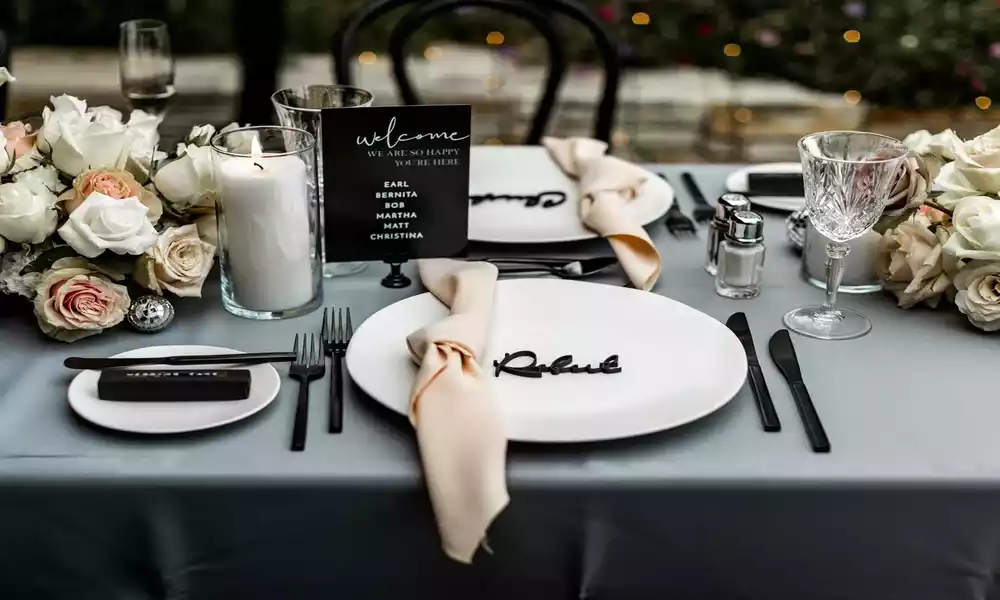
Placement and display
Place cards play a vital role in helping guests locate their seats efficiently and enhancing the event experience overall. Below are some considerations when placing and displaying place cards:
Individual Place Settings: Place cards should be set out at each individual seat on a dining table to help ensure guests can easily locate their seats upon arriving. They should be strategically positioned above or in front of plates; alternatively they can even be integrated into table decor creatively.
Clear Visibility: Placing place cards clearly in view is paramount to making an impressionful dining experience for guests. Position them so they are easily seen and accessed, without interfering with place settings or tableware. Your guests should easily recognize their names at a glance on these cards.
Proper Alignment: For an organized and polished appearance, place cards should be aligned evenly and consistently across tables to achieve uniformity of placement of place cards across tables. Achieving this result creates a more pleasing and professional presentation.
Design Integration: Place cards can easily be integrated into table designs and decor, matching with event themes, colors or materials used in table settings for seamless yet visually appealing table setup. This provides an added layer of cohesiveness and visual interest.
Calligraphy or Printing: Place cards should include names written or printed clearly in legible fonts to add sophistication and ease to reading the names on them. Professional calligraphy or high-quality printing could add that extra layer of sophistication that adds ease of reading for visitors at your event.
Table Plan or Diagram: If possible, provide guests with an easily-visible table plan or diagram at the entrance or in a visible location to help them quickly locate their table number or name without confusion or delays in finding their place card. This helps make things run more smoothly for all concerned.
Special Considerations: For events with special considerations, such as VIP guests or dietary restrictions, it may be beneficial to discreetly indicate these details on place cards so that staff is aware of any special requirements and can provide quality service to each guest.
By thoughtfully placing and displaying place cards at events, event organizers can create an attractive yet functional arrangement that assists guests in easily finding their seats. Achieved flawlessly, placing place cards adds elegance and refinement that adds enjoyment for all attendees of an event.
Information included on place cards
Place cards typically include information to provide specific seating assignments to guests attending an event, which may differ depending on its nature and organizer preferences;
here are the usual details found on place cards:
Guest Name: Each place card clearly displays the guest for whom its seat has been reserved, making it easier for guests to quickly identify their assigned seats at the table and find their seating locations with ease.
Table Number or Name: Place cards may include information that helps guests quickly identify their tables, particularly at larger events with multiple tables. This feature can provide additional guidance in locating their specific table. This feature can prove especially helpful at events with multiple tables.
Design and Aesthetics: Although place cards do not serve a strictly informational function, their design and aesthetics contribute significantly to their appeal and effectiveness. Place cards can be tailored to match any event theme or decor with unique designs, colors and materials chosen to form an aesthetically pleasing display.
Special Indicators: Depending on the requirements of an event, place cards may include special indicators or symbols to denote specific concerns. For instance, different colored place cards could indicate any dietary restrictions or preferences to ensure that serving staff are aware of any special considerations.
Additional Details: Place cards may include additional information related to an event or the organizer’s preferences, such as date, couple/host name(s), or other pertinent data that adds a personal touch and creates a cohesive design theme with overall event design.
Place cards must contain clear and easily understandable information to enable guests to quickly locate their seats without confusion. Creating place cards that meet this standard enhances guest satisfaction while adding elegance and contributing to overall event organization.
Benefits of using place cards
Place cards can help create a smoother event experience for both guests and event organizers, offering various advantages over time.
Here are a few key benefits associated with using place cards:
Place Cards Provide Clear Seat Assignments: Place cards offer precise seating assignments for every guest at an event, eliminating any confusion or uncertainty about where guests should sit and ensuring guests arrive comfortably and accurately seated – creating a smooth flow during an event.
Effective Seating Arrangements: Place cards allow event organizers to plan and coordinate seating arrangements strategically, taking into account guest preferences, relationships or any special considerations as needed to create optimal arrangements that encourage socialization at an event and add atmosphere.
Personalized Guest Experience: Place cards provide a more tailored guest experience by acknowledging guests by name and showing where their seats are. This makes attendees feel valued and welcome, creating positive impressions and enriching the overall event experience.
Smooth Service Delivery: With place cards, event staff can easily identify and locate each guest’s assigned seat, enabling efficient service delivery as staff can serve meals, beverages or other services directly to their correct recipients – helping ensure an uninterrupted dining experience! It helps minimize disruptions while creating an enjoyable dining experience for all attendees.
Place cards offer the ideal platform for networking and social interaction among guests, by strategically seating guests with compatible individuals or in close proximity to key contacts, place cards can facilitate meaningful dialogue and connections that lead to meaningful discussions and encounters.
Order and Organization: Place cards help create an orderly event environment by making seating assignments more transparent, eliminating confusion or conflict over who should sit where. Their presence creates a polished yet professional appearance and leaves guests with a positive impression of your event.
Event Logistics: Place cards assist event organizers in more efficiently managing event logistics. By visualizing seating arrangements, place cards enable organizers to monitor seating assignments, make necessary adjustments and ensure each seat is appropriately filled.
Event organizers can use place cards to create a structured and personalized seating arrangement that enhances guest experiences, encourages socialization and provides efficient event management. Place cards add elegance, professionalism and attention to detail, contributing to overall event success.
Comparison Table of Escort Cards and Place Cards
Sure! Here’s a comparison table outlining the key differences between escort cards and place cards:
| Criteria | Escort Cards | Place Cards |
|---|---|---|
| Function and Role | Guide guests to their tables | Designate specific seats |
| Display and Location | Typically displayed at the entrance or foyer | Placed directly on the tables |
| Level of Specificity | Indicate table assignments only | Specify individual seat assignments |
| Design and Format | Can be creative and varied | Often follow a consistent format |
| Usage | Suitable for large events, where guests choose their own seats | Suitable for formal and intimate events, where specific seating arrangements are required |
| Information Included | Guest name and table number/name | Guest name |
| Display Area | Displayed on a separate display area away from the tables | Placed directly at the individual seats |
| Personalization Opportunities | Limited to guest names and table assignments | Allows for personalization and attention to detail |
| Guest Experience | Provides flexibility and allows guests to choose their own seats | Offers a clear indication of individual seating assignments |
| Appropriate Occasions | Large weddings, corporate events | Intimate dinners, formal receptions |
Please note that the above table highlights the general differences between escort cards and place cards. Depending on the event and personal preferences, some variations and
When to Use Escort Cards or Place Cards
A. Factors to Keep in Mind
Event Size and Complexity: For larger events that include many guests or multiple tables, escort cards are more practical as they provide a general table assignment without individual seat designations; place cards are best used at more intimate gatherings where individual seat assignments may be necessary.
Guest Preferences and Expectations: Understand your guests’ preferences and expectations carefully when planning any event, from choosing their seats freely with escort cards to formal or structured events where place cards offer organization and clarity.
Formality of an Occasion: The formality of any event can also play a part in choosing between escort cards and place cards for an event, with casual or semiformal occasions often opting for escort cards while formal affairs requiring specific seating arrangements are more likely using place cards.
B. Below are examples of suitable occasions for each dress code.
Escort cards: Large weddings: Escort cards can efficiently guide guests to their tables, accommodating more attendees.
Corporate Events: For corporate events with multiple guests attending simultaneously, Escort cards allow flexibility for guests in selecting seating arrangements as well as creating networking opportunities.
Place cards can add an elegant and precise touch to formal receptions by emphasizing individual seat assignments in an intimate dinner setting. They also can help facilitate smaller gatherings by assigning each guest their own seat number.By considering these factors and examples, event organizers can make an informed decision regarding escort cards versus place cards to ensure an enjoyable guest experience.
Conclusion
Both escort cards and place cards play important roles in event planning and seating arrangements. Escort cards typically serve to mark table assignments while place cards outline individual seat assignments; both options present unique benefits and considerations.
Escort cards provide more freedom for guests, enabling them to choose their seats within an assigned table and add an individualized touch to events. On the other hand, place cards provide greater precision by assigning specific seats per guest for optimal service delivery and clear seating arrangements.

